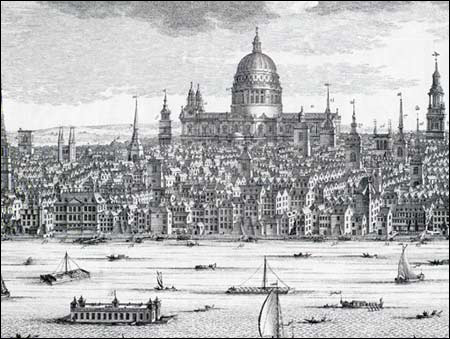Exhibit maps growth of London
From town to city to megametropolis

Spanning four centuries, the exhibition “Civitates Londinium: Maps of London from 1572,” documents how London grew from town to city to megametropolis. The
‘Civitates Londinium: Maps of London from 1572’ is at the Harvard Map Collection in Pusey Library. For more information, call David Cobb at (617) 495-2417.
exhibition, open through June 30 at the Harvard Map Collection in Pusey Library, is organized chronologically. Moving forward from map to map is like gazing on still frames from a highly sophisticated flip book – the boundaries of the city move out, bridges are built, buildings are burnt and reconstructed.
“This selection of maps is particularly interesting because it shows not only the development of the city, but how events in the city, such as the great fire of London and the creation of the Thames Tunnel, impacted the cultural and sociological growth of the city, the country, and the continent,” said David Cobb, head of the Map Collection at Widener Library.
A map dating from 1666 outlines the area of the city devastated by the great fire of London, which occurred earlier that same year. A panoramic drawing below the map shows the city in flames and the catastrophic impact of the tragedy is further revealed by the three-language descriptive text on the map – evidence that countries outside of England were interested in and touched by the event. Also in the exhibition are three illustrations of the Thames Tunnel dating from 1825, which show the tunnel location, construction plans, and progress. The Thames Tunnel represented the first time engineers attempted to build a tunnel under a body of water. A map by Benjamin Rees Davies from 1865 is titled “Davies’s new map of the British metropolis, the boundaries of the boroughs, county court districts, railways, and modern improvements.” The inclusion of the word ‘metropolis’ reveals the changing nature of the perception of the city of London – it has now grown from a small walled city of the 16th century to one of the major cities of Europe.




